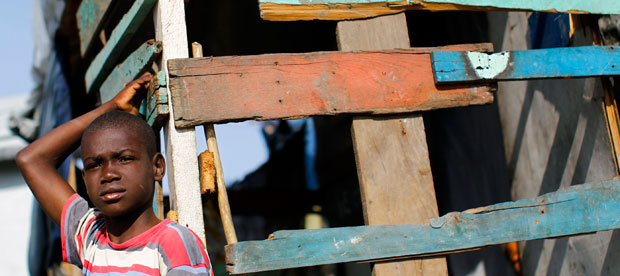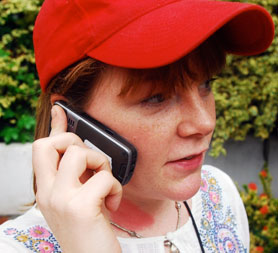Searching for the families of Haiti’s lost children
A year since the earthquake devastated Haiti killing hundreds of thousands of people, Save the Children writes for Channel 4 News on the ongoing plight of the country’s orphaned youngsters.

Hannah Reichardt (pictured below), is Emergency Communications Manager at Save the Children.
One of the saddest facts I’ve learnt about the current situation in Haiti, is that 3,000 children who have been registered as separated from their families are not yet reunified with them.
These are children who have experienced immense sadness and grief over the past year, but have had to deal with life post-quake without the love and support of their family. These are some of the most vulnerable children in Haiti, and many of whom form part of the 380,000 children are still living in camps.
Save the Children leads the Family Tracing Network, the body that is working tirelessly to identify children who are separated from their family and bring them back together.
The network has reunified 1,265 children so far, but there is a vast amount still to do to. And this work takes a long time, in a crisis scenario where there is little pre-existing paperwork, no clear addresses, few telephones. Case workers, like Dominique Mathieu, literally have to travel around the city of Port-au-Prince and surrounding areas by car and on foot seeking out families according to the information they gather.
Those who do this challenging job have to be absolutely committed to work that protects children. Dominique told me: “Being a case coordinator is a very good job. Many kids lost parents after the earthquake, and many parents didn’t know where their children were.
“We have many children who aren’t with their parents, and when we are able to bring them back together it is very good for our country. That is why I came to work for Save the Children.”
Exploitation
I was really happy to meet a child who had been happily reunited with his father, brothers and sisters. Deusel is 11-years-old – his father had sent him to live in Port-au-Prince with someone who promised to take care of him and ensure he got to go to school.
Instead this person passed Deusel on to someone else, who made him work in their home, didn’t let him go to school and treated him really badly.

Deusel told me, “When I was working for the family I didn’t feel well. I didn’t feel like living. I used to carry containers of water on my head, wash dishes and mop the floors. I missed my family.”
Deusel is now back living with his dad in a very modest home, cobbled together with wood, corrugated iron in a small village outside of Port-au-Prince – they are obviously very poor.
Reunited
But he is happy, and he smiles widely when he meets us and gives his dad a hug. This month, he’s hoping to start school – and from this point forward Save the Children and his family hope that life can only improve for Deusel.
I found it shocking when I learnt that the number of children registered as separated is likely to be the tip of the iceberg – the majority of the actual number will have been separated from their families since long before the quake.
Many of these are living like Deusel, as ‘restavecs’ – children living in domestic servitude, often involuntarily.
Children in Haiti faced a multitude of threats to their well-being and safety before the quake, but they are now magnified by the terrible conditions they’re living in.
We should be reminded that a crucial part of helping Haiti recover has to be protecting and looking after the country’s most vulnerable children.